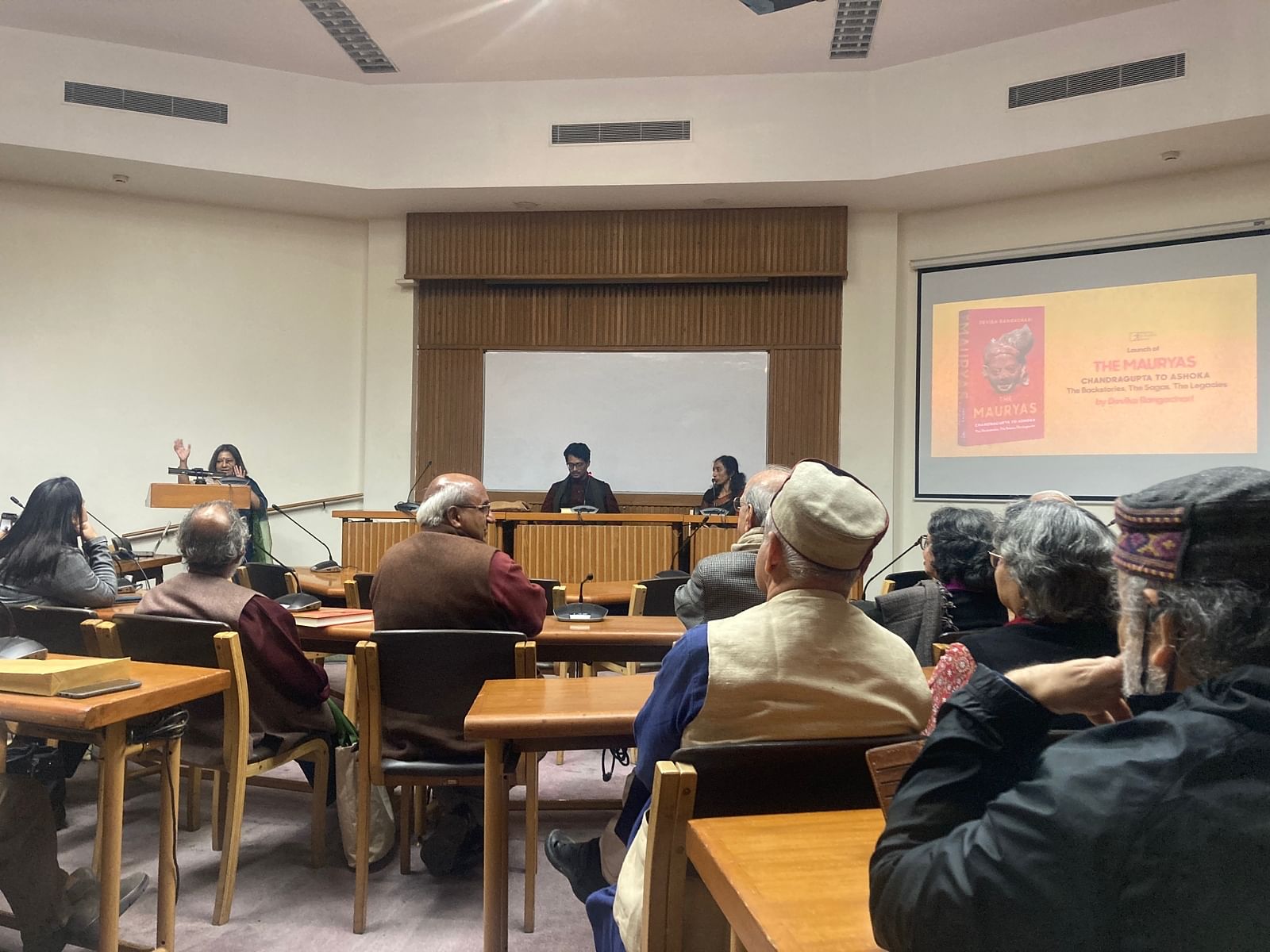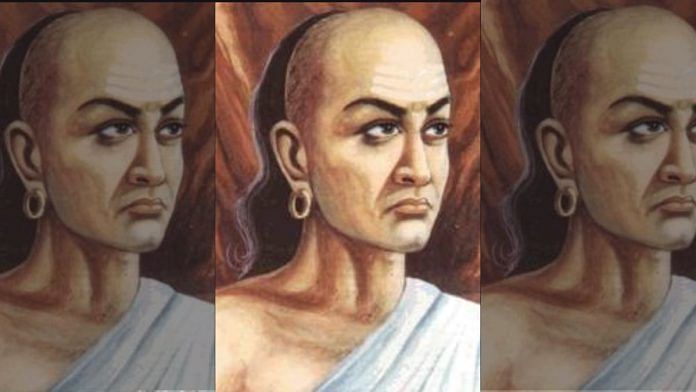A lion made of wax. A prince covered in red turmeric to fake an illness. A king with multiple women bodyguards. These were the stories being discussed during a typical Delhi winter evening at the launch of Devika Rangachari’s new book, The Mauryas: Chandragupta to Ashoka.
One big question is whether Kautilya, or Chanakya, immortalised as the wily and strategic advisor to King Chandragupta Maurya, existed in the first place.
There is frustratingly little evidence to confirm Kautilya’s existence. His treatise, the Arthashastra, is a book about statecraft, filled with intrigue and tactics.
“We know that Kautilya was basing his book on a known reality — or something that he helped construct — which is the Mauryan polity,” said Rangachari in conversation with popular historian Anirudh Kanisetti, author of Lords of the Deccan: Southern India from Chalukyas to Cholas, addressing a 50-seater room packed at the India International Center.

Rangachari said that she believes in Chandragupta Maurya’s case, a conjunction of chronological and spatial evidence confirms his existence.
Rangachari’s project straddles the famous Mauryan empire, bookended by the most popular Mauryans: Chandragupta Maurya and Ashoka. Sandwiched between is Bindusara, a lesser-known—but influential— Mauryan. Meant to be a refreshing new take on the myths and legends surrounding the dynasty, the book also looks at how religious and historical sources depict their rulers.
Also read: A Carnatic singer, historian, Sanskrit professor revive Ashoka as India turns to Kautilya
Finding new stories in old sources
History is a massive jigsaw puzzle, and Rangachari’s task of fitting the pieces together wasn’t easy. The further back one goes into history, the fewer sources one has to work with — and the Mauryas, who ruled the Gangetic plains roughly from 321 BCE to 185 BCE, are situated firmly within ancient Indian history.
The literary traditions of the Buddhist, Jain and Brahminical texts describing the Mauryas are at odds with each other. Both the Buddhists and the Jains have tried to claim the kings of Magadha as their own because of their political influence — as a result, several legends have been retold in each tradition thereby constructing separate historical narratives.
“History is all about stories, and the stories from these different literary traditions — Brahminical, Buddhist, and Jain — all cheerfully contradict each other,” said Rangachari. “There’s always a kernel of historical truth in the stories we read; a story isn’t telling you everything that’s a fact.”
“In a way, the endless repetition of a story becomes history,” shrugged Kanisetti, summarising the difficulties of historiography.
The additional challenge is reinterpreting these sources to offer new insights into the lives of such legendary characters, who have already been mythologised and deified. Rangachari said she had to “don the cap of a detective and psychologist,” and construct a plausible, coherent narrative from available textual and archaeological sources.
Also read: Ashok Vijaydashmi to Dhola — National archives, central libraries failed Dalit-Bahujan history
The Mauryan experiment
The great Mauryan experiment is about ethics and empire-building. Guided by Kautilya, Chandragupta laid the blueprint for an empire with successful statecraft. His grandson, Ashoka — the one Maurya everyone knows about — emphasised the importance of image management and communicating his people.
Ashoka indulged in a bloodbath to get the throne, inventing strange loyalty tests, and running riot with his empire. This changed after his pyrrhic victory in Kalinga and his introduction to Buddhism: at this point, he began formulating his ethical policy of governance. Interestingly, Buddhist texts don’t mention the war in Kalinga at all. But Ashoka himself proclaims twice in his edicts about the conquest. “Almost like he’s saying I did a terrible thing, don’t make me do it again!” said Kanisetti, to laughter.
Rangachari said that Ashoka’s name is often invoked to confer greatness —through awards, or naming naval vessels. Kanisetti added that the Mauryan Emperor comes across as a modern politician who recognised the need for an overarching ideology or identity that a large State must follow. In fact, former Prime Minister Jawaharlal Nehru famously revered Ashoka and drew upon his principle of ‘dhamma’ to guide brand-new India’s politics.
“Ashoka was a pragmatist, and not as pacifist as sources convey,” said Rangachari. “How do you bind an unwieldy empire together? He did it through his words, proclamations, and edicts.”
Rangachari, who is also an award-winning children’s writer, said that she’s included most of the popular stories about the Mauryans — like omens Chandragupta Maurya saw and the women bodyguards he kept, as well as stories of palace intrigue like smearing prince Ashoka’s body with red turmeric to make him appear ill and thwart a revolt.
“The Mauryas are an exciting part of history, and given Devika’s credentials, I’m sure the book will be enriching,” said historian Upinder Singh, Professor of History and Dean of Faculty at Ashoka University.
“All the big historians have written about the Mauryas — it takes guts to write about them now, so kudos to her!” said Prachi Sharma, an independent researcher who attended the event. She added that she was especially intrigued by the legends, and anecdotes that Rangachari has pieced together from existing sources.
There are stories and there are counter-stories, Rangachari said, both of which are necessary to construct a historical narrative.
“There’s a growing conviction in India that there’s one single historical narrative,” said Kanisetti. “The idea that there are multiple conflicting narratives that should be read critically is something that requires historical humility and literacy — which this book does very well.”
(Edited by Ratan Priya)




